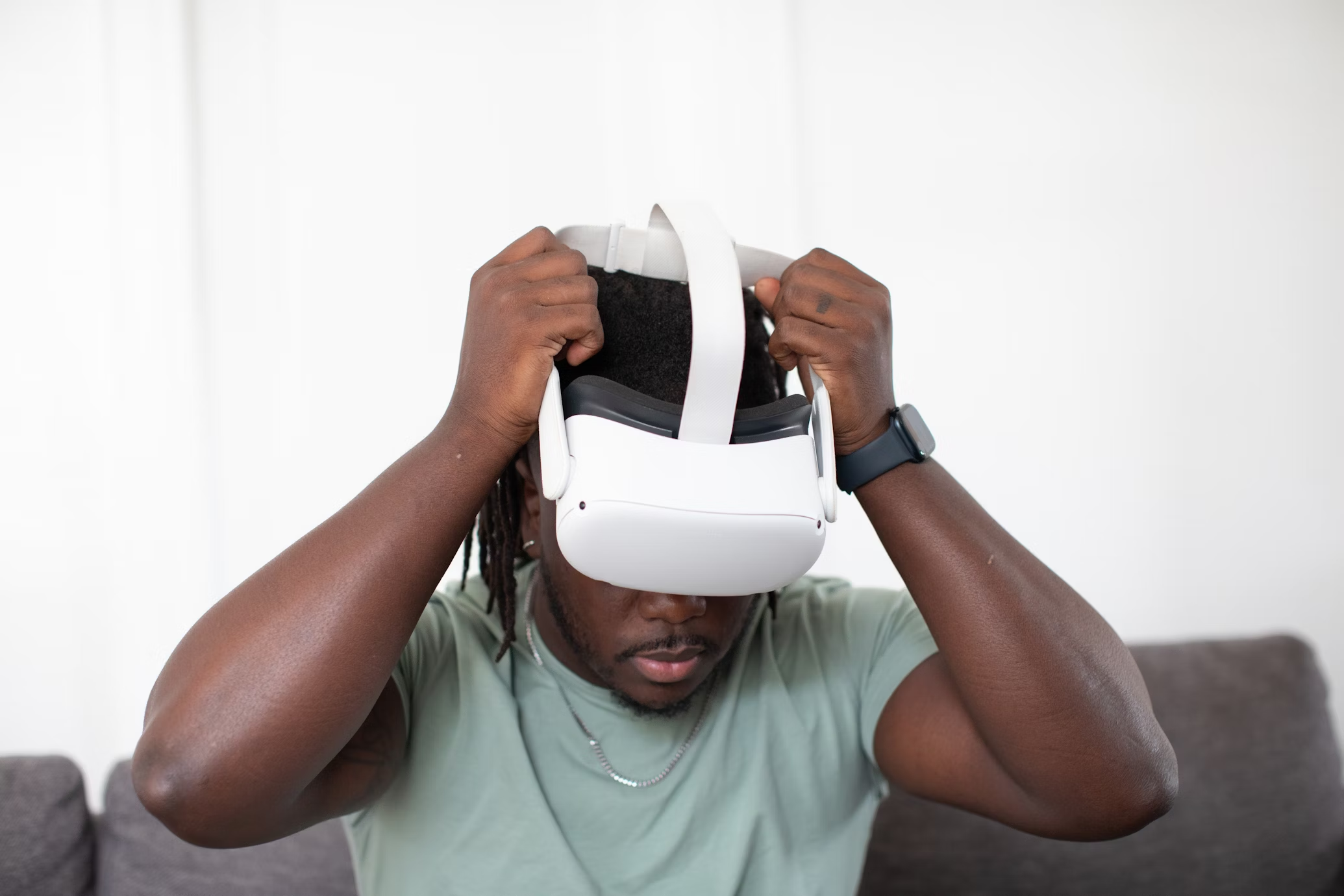
Virtual reality (VR) has been on a transformative journey, evolving from a niche concept into a groundbreaking technology that impacts various sectors, including gaming, education, healthcare, and industrial design. Recent VR technology breakthroughs have significantly enhanced accessibility, effectiveness, and user engagement, promising an exciting future with limitless possibilities. This article explores the latest innovations in virtual reality, highlighting how these advancements are revolutionizing the user experience and expanding the potential applications of VR across different industries.
Advancements in Haptic Feedback Technology
One of the most significant innovations in virtual reality is the development of sophisticated haptic feedback systems. Haptic technology simulates the sense of touch by applying forces, vibrations, or motions to the user. This breakthrough enhances the realism of virtual environments, allowing users to feel textures, resistance, and impact within VR experiences.
For instance, gloves and suits equipped with haptic feedback mechanisms enable users to interact with virtual objects as if they were real. This technology is particularly beneficial in medical training and rehabilitation fields, where it allows for realistic, safe, and controlled simulations of surgical procedures or physical therapy sessions.
Wireless VR and Improved Mobility
The advent of wireless VR headsets marks a significant milestone in the evolution of virtual reality technology. Early VR systems required users to remain tethered to a computer or console, limiting their mobility and impacting the overall immersive experience. Recent innovations have seen the development of powerful wireless VR headsets that offer the same high-quality experience without the restrictions of cables.
Companies like Oculus, HTC, and Valve have released or are developing advanced wireless solutions that ensure freedom of movement, enhancing the realism and immersion of VR applications. This breakthrough is particularly transformative for VR gaming and training simulations, where unrestricted movement is crucial.
Eye Tracking and Facial Expression Recognition
Recent innovations include eye tracking and facial expression recognition technologies, which enhance user interaction within VR environments. Eye tracking allows VR systems to understand precisely where a user is looking, enabling more intuitive interactions and reducing motion sickness by adjusting the graphics based on the user’s gaze.
Facial expression recognition integrates users’ facial movements into the virtual environment, enhancing social interactions and communication in VR. This technology makes virtual meetings and social interactions more natural and engaging, significantly benefiting remote collaboration and social VR platforms.
Photorealistic Virtual Environments
Advancements in graphics technology have enabled the creation of photorealistic virtual environments that are nearly indistinguishable from the real world. High-resolution textures, advanced lighting effects, and realistic physics simulations make VR experiences more immersive and convincing.
These photorealistic environments are crucial for applications such as virtual tourism, architectural visualization, and training simulations for high-risk industries like oil and gas exploration or aerospace. VR can deliver practical training and planning tools that enhance safety and efficiency by providing a realistic simulation of real-world scenarios.
Integration of AI with VR
Integrating artificial intelligence (AI) with virtual reality is a breakthrough innovation that has significantly expanded the capabilities of VR systems. AI algorithms can generate dynamic content in virtual environments, adapt real-life scenarios based on user interactions, and enhance the realism of AI-controlled characters within VR applications.
In educational contexts, AI-driven VR can customize learning experiences to fit individual users’ needs and learning pace, creating highly effective and personalized educational tools. In gaming, AI enhances non-player characters and environments, making them react intelligently to player actions, increasing the game’s complexity and enjoyment.
Expansion of VR in Telepresence and Remote Collaboration
Recent global events have accelerated the adoption of VR in telepresence and remote collaboration. Virtual reality platforms now enable users to interact in three-dimensional virtual meeting spaces that replicate the experience of in-person interactions. These platforms support various activities, from business meetings and conferences to virtual classrooms and remote medical consultations.
The use of VR for remote collaboration reduces the need for travel and enhances the effectiveness of communication and teamwork across distances. As VR technology continues to improve, it is expected to become a standard tool for remote work and learning, providing a more engaging and productive alternative to traditional video conferencing.
The ongoing innovations in virtual reality technology are breaking new ground in how we interact with digital content and each other across virtual spaces. From enhanced mobility and realism to integrating AI and improved collaborative tools, VR is set to revolutionize numerous aspects of our lives. As VR technology advances, it promises to unlock even more applications, making virtual experiences more immersive, accessible, and impactful. The future of virtual reality is bright, with its potential only limited by the imagination of those developing and using it.